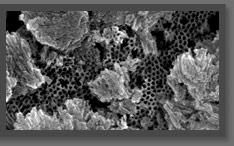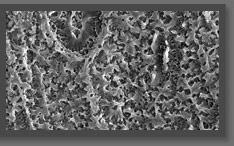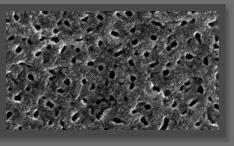LOW TEMPERATURE AND HIGH DENSITY CURRENT
LOW TEMPERATURE AND HIGH DENSITY CURRENT
Hard anodizing respects the same formation principle as that of conventional anodizing. The difference is that the operation is done at low temperature and high density current. When the hard anodic layer forms, the pores formed are smaller than those of the normal procedure. This therefore increases the density of the layer. For this procedure, the penetration/swelling percentage is slightly different than that of the standard procedure. This time, the proportions are 50% each.
Normal anodizing usually produces layers from 5 to 25 micrometres, whereas hard anodizing can obtain thicknesses varying from 25 to 200 micrometres. The equipment at Anodisation Québec can produce an anodization of a thickness of 25 to 100 micrometres.
Hard anodizing makes it possible to increase the part's abrasion resistance. Since the oxide thickness is a lot larger than with the standard anodizing, the protection against corrosion is also increased.
According to the literature, the hardness that can be obtained through this procedure varies between 400 and 800 Hv (41.7 and 62.5 HRC) for 50 micrometres. The hardness varies according to the alloy. It is important to know if a hard anodization layer is sealed, because its resistance will be increased but its hardness will be weakened.
In addition, when the oxide layer reaches a thickness of 25 micrometres or more, its colour will change naturally. This colour is dependent on the alloy elements present in the metal. In the case of alloy 6061, the colour will be grey and will become darker with the increase in thickness.




